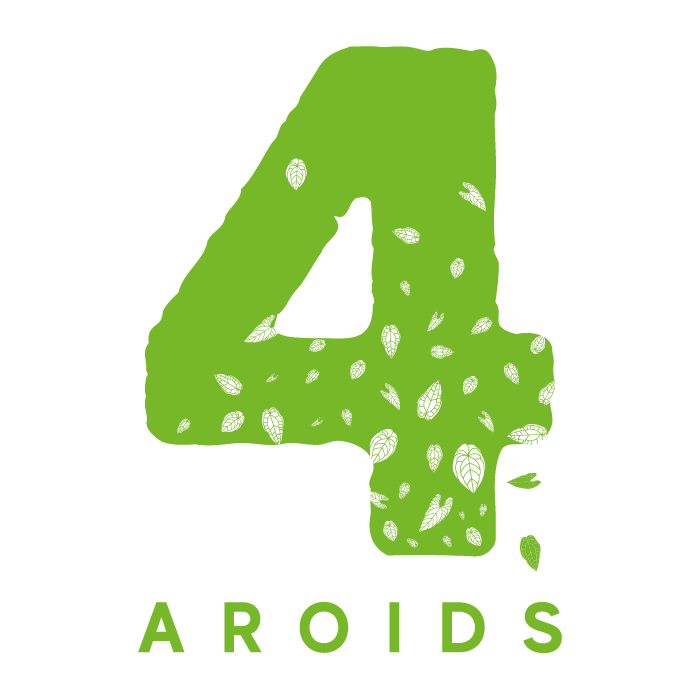The Anthurium papillilaminum Croat is an endemic species of the section Cardiolonchium that lives exclusively in Panama and was discovered in 1986 by Dr. Thomas B. Croat, curator of the Missouri Botanical Garden. Dr. Robert Dressler is said to have first collected specimens at the end of the 1960s. The specimen described was collected by him in 1982.
The basic characteristics are the ground-bound (terrestrial) growth, the elongated oval to narrow oval leaves with a heart-shaped base and a velvety, green to dark green surface. The leaf stalks (petioles) are almost round (subteret), sometimes slightly furrowed, mostly green, but sometimes also reddish to reddish-purple. The inflorescence is characterized by a lance-shaped, green to red-violet flower sheath (spatha) and a green to yellowish-green spadix (spadix) with many papillae ("warts"). Another feature compared to other Anthurium species is the always pale veins without any silver or white content.
The distribution extends from central Panama to the easternmost province of Darien on slopes from sea level to 100m above sea level. The originally described plant (holotype) came from Achiote in the province of Colón, near Lake Gatún. Other known populations in Colón Province are found on the western bank of the Panama Canal and near Portobelo. Populations are also said to occur in the provinces of Coclé and Guna Yala.
Anthurium papillilaminum is considered one of the most variable anthurium species. Within individual populations, specimens with long, narrow leaves, but also plants with rounded leaves, occur.
The Anthurium papillilaminum has become increasingly popular among horticulturists, plant collectors and the like since at least the 2000s. While species-pure specimens initially circulated, it is claimed by some collectors that the purity of the plants circulating decreased over time due to the species' ready hybridization with other species. “Pure” specimens are said to have only recently come into circulation again through wild collections and well-known collectors and breeders.
The species has recently received particular attention on social media due to events involving suspected mass taking of wild animals. These are said to have taken place particularly in the provinces of Coclé and Guna Yala. Since 2023, large quantities of pure Anthurium papillilaminum have also been available commercially. These can be assigned to some of the above-mentioned populations based on their appearance (phenotype).
Popular individual, genetically determined plants (clones) are, for example, Jay Vannini's Anthurium papillilaminum 'Ralph Lynam' and Anthurium papillilaminum 'Fort Sherman' from the Panama Canal population, his Anthurium papillilaminum ' Green Genie' from the Lago Gatún population,Scott Cohen's Anthurium papillilaminum 'A+' , the Vanderbilt clone, the Ree Garden clone or Rory Antolak's RA #5 . Collectors sometimes pay high prices for these plants with traceable origins.

Leave a comment
This site is protected by hCaptcha and the hCaptcha Privacy Policy and Terms of Service apply.